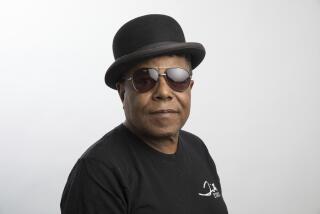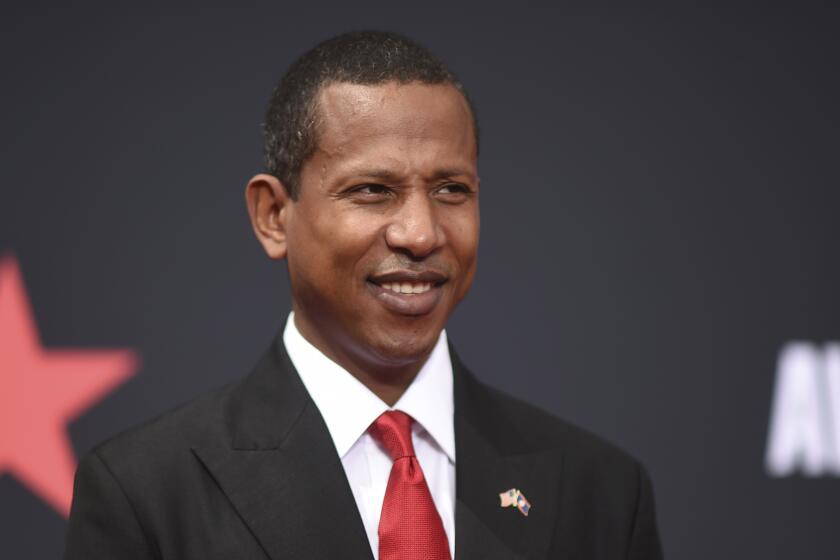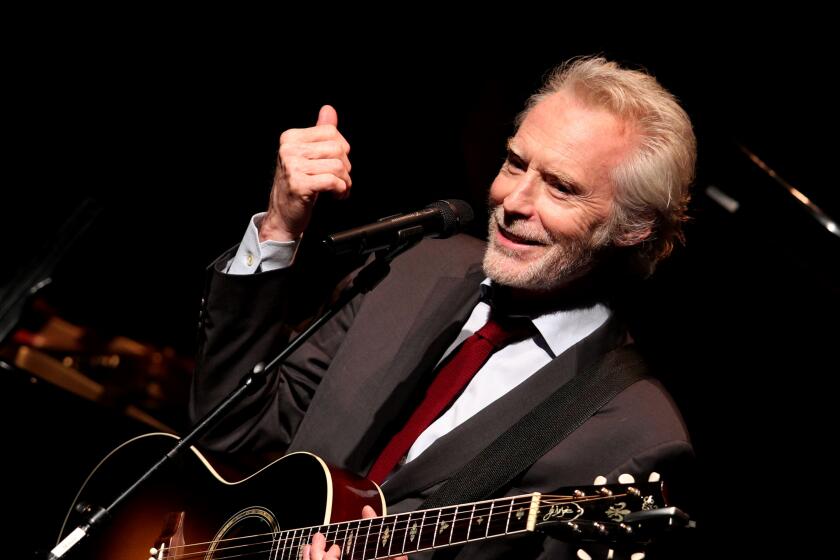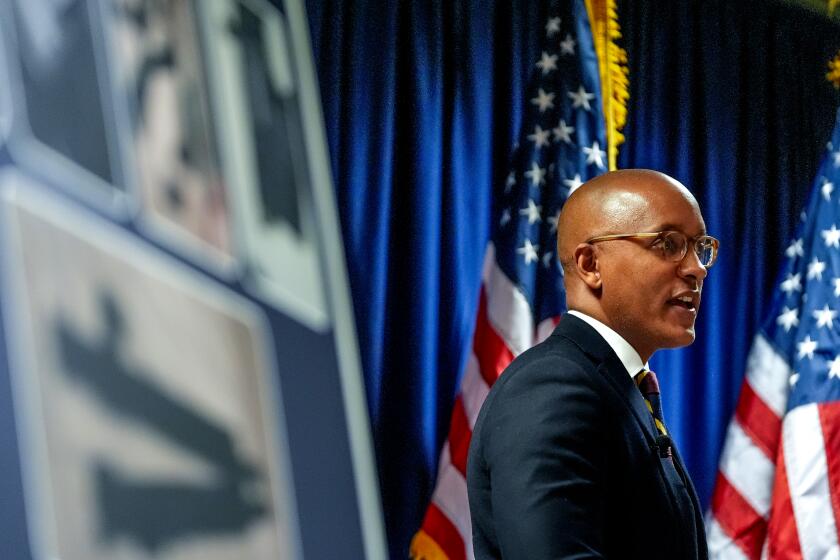Now on Your Turf, It’s Those Tenors--Again : Commentary: The monster show by Carreras, Domingo and Pavarotti is now available on CD and videotape, and for better or worse, the focus is on the concert.
The boys are back--beaming, smirking, sweating, bellowing, selling, blowing kisses, waving hankies, punching the air with victorious fists and the sound system with climactic not-too-high notes.
Jose, Placido and Luciano have returned (discreetly introduced, as always, in the alphabetical order dictated by their last names). The erstwhile pirates of the high C’s are together again.
First, in case you have been off the planet lately, there was the big concert at the Baths of Caracalla in 1990. Then, this spring, there was the intimate encore-tryout in Monaco. Finally, last month, there was the monster concert at Dodger Stadium.
You remember the monster concert? Splashed across the grateful universe on the eve of the World Cup soccer finale, it involved a vocal circus in which the presumably golden voices of Carreras, Domingo and Pavarotti were reduced to overamplified tin for the delectation of some 53,000 delirious fans in quest of painless culture.
It was, er, unique.
And now, folks, we have the official tenorissimo CD (Atlantic 82614-2). And the official videotape (VHS 50822-3). Surely the official bath towel, the official comic book and the official breakfast cereal cannot be far behind. This, after all, is a Tibor Rudas production.
Lots of people who attended the program heralded as “the concert of the century” thought it really was stupendous. Even the wandering multitude of latecomers who had been caught in a traffic nightmare liked it. My mailbox certainly attested to that. Nevertheless, the souvenir recordings, both aural and visual, prove that this was essentially a media event. You didn’t have to be there.
The microphones are much kinder to the voices than the stadium public address system was. The cameras provide insights denied even those on the side of the ballpark that afforded a view of the DiamondVision screen. Although the convocation of July 16 may never provide cherished memories for sophisticated aficionados of the lyric muse, it certainly exerts more compulsion canned than live.
The CD version, it should be noted, lasts only 72 minutes and shuffles the actual agenda. It leaves out the national anthem and both the “Candide” overture and “Rakoczy” March as conducted (and mugged) by Zubin Mehta. Missing, too, are three tenor solos: Verdi’s “Quando le sere al placido” as sung by Placido, Schubert’s “Ave Maria” as soupily arranged by Lalo Schifrin and sung by Luciano, and Puccini’s “E lucevan le stelle” as sung by Jose.
Both CD and video do include two of the numerous post-performance gimmicks, culled from a lengthy series of public retakes and padding possibilities that masqueraded as encores. The tuneful trio has its odd way with the competitive brio of “La donna e mobile,” and the boys take turns assuming vocal drag as Violetta in the “Traviata” brindisi. “O sole mio,” with its famous trilling contest, is missing, but the video version, which lasts 112 minutes, adds yet another anything-you-can-sing-I-can-sing-bolder edition of “Nessun dorma.”
This instantly brings Bob Hope, among others, to his feet out front. The cameras catch glimpses of other apparently ecstatic admirers in the course of the evening: George and Barbara Bush, Henry Kissinger, Arnold Schwarzenegger, Gene Kelly, Robert Shapiro . . .
The editors spare us the sight of Frank Sinatra stumbling as he acknowledges what must be the strangest distortion of “My Way” in the history of Western civilization. The editors offer one amusingly magical moment that finds Mehta still conducting the L.A. Philharmonic on the soundtrack while already taking a bow on the screen.
The editors do not spare us close-ups of Luciano Pavarotti chewing gum as well as purly tone while, eyes glued to score, he bumbles through the popsy mush of Lalo Schifrin’s “Around the World” arrangement.
Schifrin, by the way, has sued Rudas regarding what he defines as billing oversights. The Hollywood composer is prominently listed among the credits for both boxes, however, and his name appears in the final crawl on the video screen.
Those who watched the latest supertenor show on TV, where it already has been elevated to perpetual rerun status, will find the video different in several crucial ways. Gone, thank goodness, is the obnoxious, obsequious narrative hype that was provided for PBS by Itzhak Perlman. The proceedings proceed, moreover, without the interruptions of those dastardly fund-raising commercials that are the bane of non-commercial television.
For better or worse, the focus is on the concert. Carreras sounds sweet when he can float a pianissimo line, not so sweet when he pushes for a fortissimo climax. Domingo exudes fervor and brio, a little tightness at the top notwithstanding. Pavarotti has had better nights, but he still sounds like, well, Pavarotti, and that says a lot. Mehta, ever urgent, conducts the worst junk as if it were the best Tchaikovsky.
All things considered, the quality of music-making on display is as uneven as the quality of hair dye. Never mind. In the long, lofty, florid, pretentious, profitable run, that can’t matter.
And now, get ready for the documentary video on the making of the Three Tenors extravaganza. This revelation will be released, it says here, “later in the year.”
The wonders never cease.
More to Read
The biggest entertainment stories
Get our big stories about Hollywood, film, television, music, arts, culture and more right in your inbox as soon as they publish.
You may occasionally receive promotional content from the Los Angeles Times.










